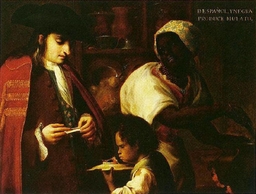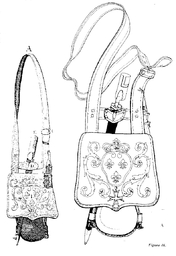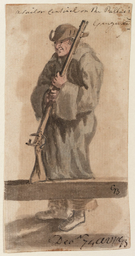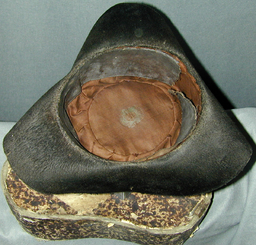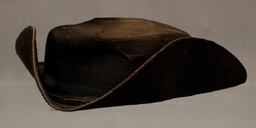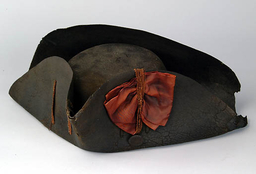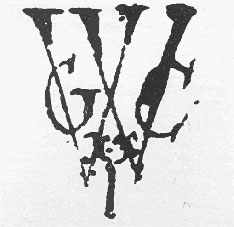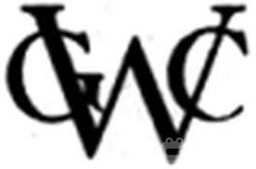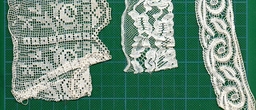
Korisios
Member-
Posts
565 -
Joined
-
Last visited
Content Type
Profiles
Forums
Events
Gallery
Everything posted by Korisios
-
I have two casta paintings from 1725, one shows a men rolling his own cigaret that I would rather call a "papelito" or "pepelete" according to a book I have about smoking. The other casta painting shows a man smoking a small cigar. Both pure Spanish men if i'm not mistaking. The book also tells that in the early 18th century such small cigars or papelitos where also made in Mexico, like they where in Sevilla at that time... Dispite the two casta painings showing smoking men, the book also states that these small cigars where more considered to be for woman...
-
-
Verry interresting, thanks for the find/link also the measurements are interresting are their all about the same size or are their differences? I hope you people don't mind me picking your brains all the time. ...
-
Thanks for the info again. Amazing how a "simple" thing as a cravat can get complicated. I am aiming towards this style of cravat to start with: And I whas thinking of making it out of silk. I have also a nice broad piece of lace for the ends, but would a fine linen then be a better choise?
-
funny thing is about the linen, that in holland the fabric "cambric" appears the be called by the the family name of it's inventor so it's Batist from Baptiste de Cambray (according to wiki)...
-
Hi Jack, first yes the aim is towards period correctness. So every info about how to get authentic is most welcome! I had to look for the difference between dupioni and taffeta using Google images, and look the two terms up on the internet to get an idea about what it would be in Dutch, so I can harras the shopkeepers here in Holland with those two terms and see if they know what their talking about... always fun (or frustrating :angry: ...) Could you tell me if Taffeta is soft and fluent, in it's folds and wrinkels?
-
Okay it's back to the store then...
-
Interesting insight, thanks Mark!
-
Nearly finnished my 18th century shirt. I just finished sowing the pleated lace onto a strip of cloth, and now I only need to attache that to the sleaves and collar slit/
-
Today I bought some bits of 100% white and black silk for making cravats. I had a choise between very fine and soft and a litle more coarse with some irregularities and aparently stiffer fabric... I wend for the coarser one thinking it would be more period, but already while walking out of the store I realised that this fabric would not fall and fold as fluid as the cravats seen on the old paintings and drawings. Only the other silk in the store looked so finely and perfectly woven that I doubted that this could be made in the old (1700) days, or could it??? Any thoughts anyone??
-
That could makes sense Mark, Would that also be the case with flintlocks? Then.., virtualy all your clothing would be ruined after a morning of target shooting??
-
Thanks guy's for the input. I also think that it would be possible that the illustrator rather wanted to make a nice drawing of an typical Spanjard, then to be a 100 % accurate, after al he is an artist and wanted to make a book that sels I quess. Just drawing a nother men in the real fashion of the time would make the men repeting himself. And like people stated in the other thread posted here, he might also not be in favour of the Spanish at that time and therefore not being to willing to draw them as highly fassionable people. Also could he have taken inspiration of the more folk clothing of surten Spanish regions, that indeed appear to be more conservative and drew heavily from older fashions...
-
If it comes to finnishing the edges of leather, then this might be an interresting photo: The edges here apear to be folded over en then stiched twice... Also a neat way to do it...
-
Thanks folks for the info, Edging the leather against shaffing does make sens. And explains the stiching you see on so many drawings, without the need for something on the back side. I have some thin red leather somewere so I could use that maybe... The leather I have is a natural pale color with the booth sides rough and I plan to rivit the parts together with big iron blued rivits. So the overall appearens would be a bit militia like I quess. I am happy to hear that painting would be a plausible option, so that's it gonna be then. I am good at painting so it might turn a bit more colorfull then just black. Could I juse modern acrilics for that to, ot does it need to be ceramics paint? I also have some gold leave laying around, could that work, or will it rubb of to easely?
-
Hi Michael This is the example I am going to work from... The edges do look to me to be covered with some kind of fabric with the stiching clearly shown. And the elaborate Flur de Lise on the flap, you think this is done with a seam grover?
-
Equipements Militaires de 1600 à 1870, Tome I The complete book in PDF. http://www.reenactor.ru/ARH/PDF/Eq_Mil_Petard_1.pdf
-
I am planning some leatherwork projects at the moment and wander about a view things: 1a. In drawings that I see (http://www.reenactor.ru/ARH/PDF/Eq_Mil_Petard_1.pdf), the edges of belts and baldrics appear to have some sort of lining or edging sown to it, does anyone have an idea what such a lining is made of? 1b. To me it would be also logical to have some kind of textile on the back- or inside of belts and baldrics, especially for the higher ranked soldiers and the rich civilians, to keep the rough backside and the edges of the leather from wasting the fabric of their clothing... I do have a modern drawing of a Spanish 1700 soldier that even does have some ruffled fabric showing from behind his baldric, I like this idea, but would love to see some period drawings of it before I put in the effort of copying this... 2. What period methods are there to decorate leather (that I can do myself)? I would like to put an intricate Spanish coat of arms emblem on my bag, and wander if it would be period, to just paint this emblem on there...? 3. Until now I assumed that riveting pieces leather together, back then would be the luxurious way of making things, compared to sowing, but when I think of it the sowing would take more time. Any thoughts of this?
-
Thanks Jib. The cockade is the most simple one you can have actually just a square piece off cloth, I only doubled it, stitched it all around and carefully pleaded it in the middle, to make it fit under the cord neatly. It's by far not all authentic or period, but I think it gifs a good feel of where I am heading at...
-
This drawing bothers me for a long time now. "it" (the caption) says 1700 Spanish Captain. To me it looks more something like 1650 ish... Could it be that someone put a wrong date on this picture somewhere? Or where Spaniard really so old fasioned back then??? I mean all other drawings and paintings of Spanish soldiers from 1700/1720 I have seen do show more modern clothing...
-
Thanks for the prompt response, so I might wanna go for piecing then, or maybe replace the entire collar since the shirt is getting mighty long and I easely could lose some of that lenght... Hm extra work.... ...
-
I am making an (early) 18 century shirt at the moment, and now somehow I ended up with a collar that is actually a bit to small I am afraid I would not be able to breath ones I attache and close the buttons... . Now I am wandering if there's another period way to close the collar that gifs me a little more space (to breath). Would it be an idea to use two buttons like the way you do the cuffs with two buttons?? Or would simply tying the collar shut with a small ribbon attached or run through to the collar be period also?? So, in short: HELP!!!
-
Sorry: guides...
-
Well let me see if i can translate it...: The Sail, stretched on ra and mast. Go's over see with Ship and Man: So Men do stretch do stretch your sail, of affectionate will and desire, So quids Gods Holy Spirit you to the gold coast, of all salvation...

